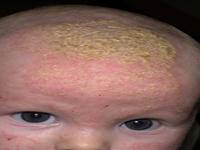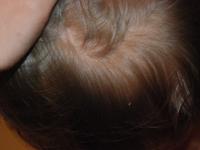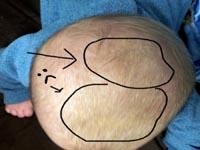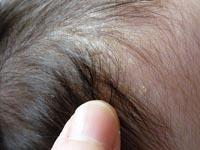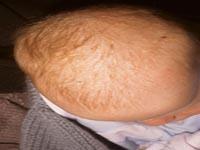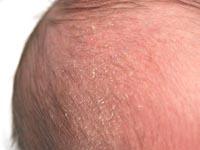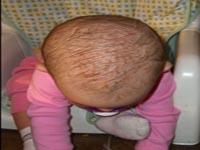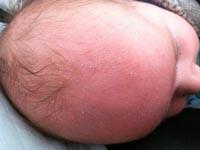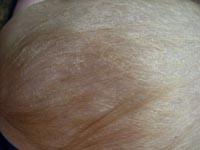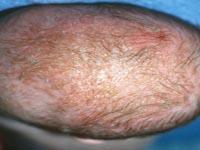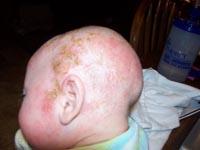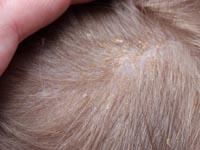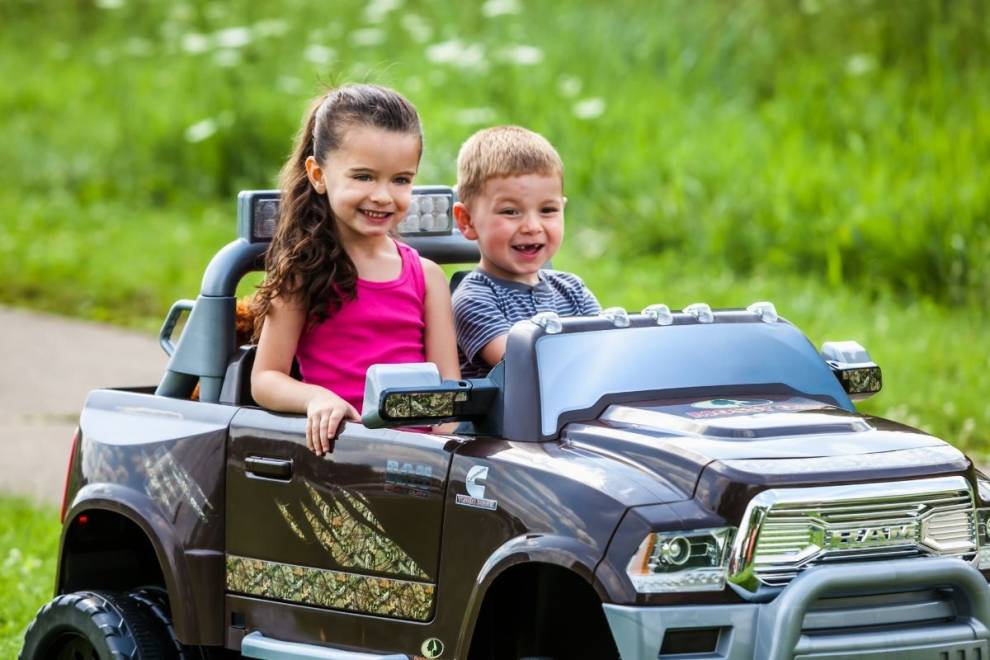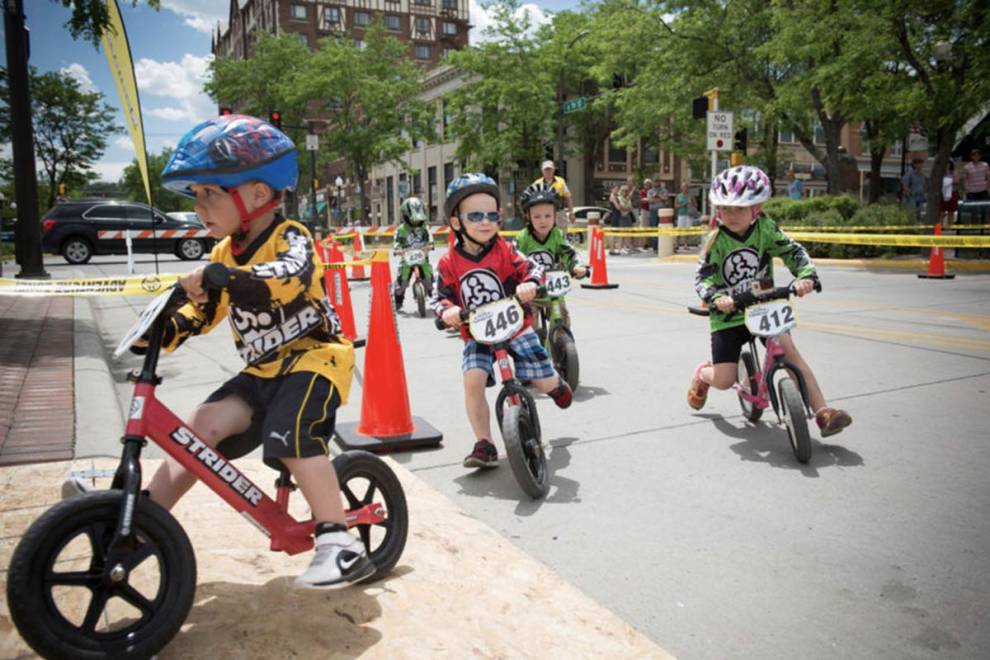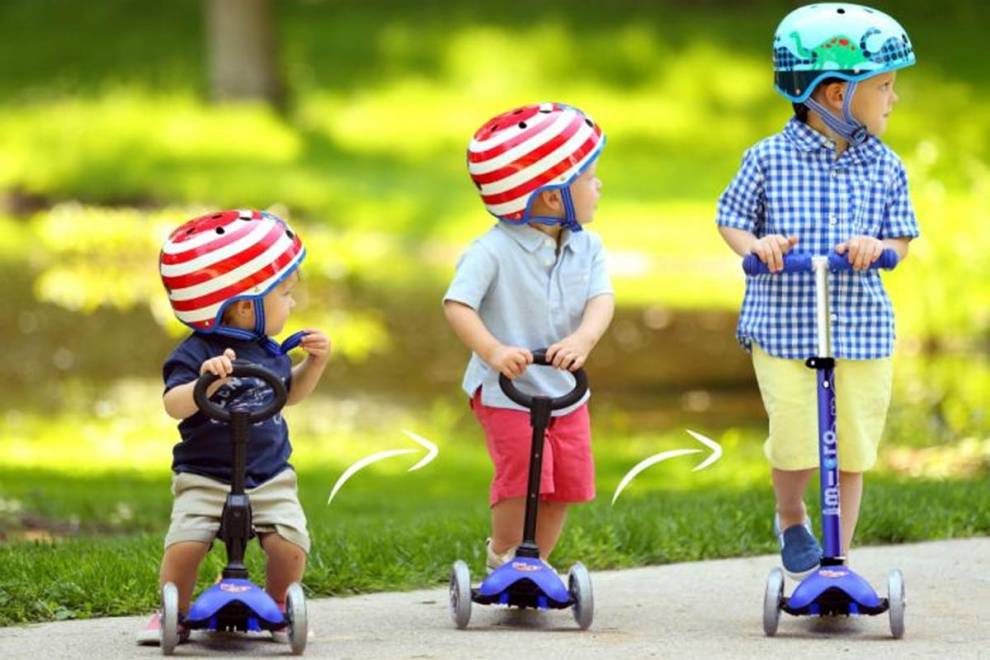Scaly, crusty, flaky and oily patches on your baby's head? It might be cradle cap.

Mommyhood101 independently tests and curates baby gear to help you make informed decisions. If you buy products through links on our site, we may earn a commission.
Your baby's beautiful little head is sensitive and vulnerable, and will be the recipient of many gentle kisses during cuddle time. But it can also develop a flaky and scaly texture, with thick crusty patches that might not be totally appealing for kisses!
All About Cradle Cap
Cradle cap is very common in babies and can look a lot like dandruff. It can also look little scales are forming on your baby's head, and the scales might be yellowish or brown.
Your baby may also have oily and thick crusty patches on the scalp. If this is the case, it is likely that your baby has a pretty common ailment: cradle cap!
Is cradle cap dangerous? When will cradle cap go away?
Cradle cap is pretty much harmless to babies. It can certainly be ugly, especially during the first 1-3 months of your baby's life, but it will usually go away on its own before your baby is a year old. Cradle cap is not dangerous, and will not harm your baby.
What causes cradle cap?
It is actually unknown why babies get cradle cap, but some believe that cradle cap can result from the hormones that are passed from mother to baby during the third trimester of pregnancy. In fact, cradle cap is believed to be caused by a similar mechanism to what is thought to cause baby acne: hormones passed from the mother to the baby make the baby's oil glands over-active. This is just a theory, there is no known concrete cause of cradle cap.
Some people might tell you that cradle cap has something to do with how often you clean or shampoo your baby's head, but it has nothing to do with hygiene. You can also rest assured that it is not contagious meaning that your baby cannot pass cradle cap to you or others.
How to treat cradle cap?
Most pediatricians will likely tell you not to do anything about it. However, if the cradle cap really bothers you, try shampooing your baby's hair 2-4 times a week with a mild shampoo, brushing the hair with a soft brush, or rubbing a soft towel through the hair.
Some people also find that rubbing their baby's head with olive oil or almond moisturizing oil can help get rid of cradle cap. Usually people rub on the oil, let it sit for 15-20 minutes, use a soft hair brush on the scalp, and then lightly wash off the oil with a mild baby shampoo.
Your pediatrician may also be able to recommend some other treatments such as cortisone cream or special shampoo, especially if the cradle cap spreads and makes your baby uncomfortable.
How to prevent cradle cap.
Once cradle cap goes away, it is unlikely to come back. There is no sure-fire way, however, to prevent cradle cap in the first place. Some do believe that frequently shampooing your baby's hair will help prevent it. Try shampooing about 2-4 times per week (maybe every other day can be your new routine).
Cradle Cap Pictures
Below are a dozen photos of cradle cap, showing varied extent, color, texture, and severity.
When looking through these pictures of cradle cap, remember to always ask your doctor before beginning any treatment!
Click on any photo to enlarge!






